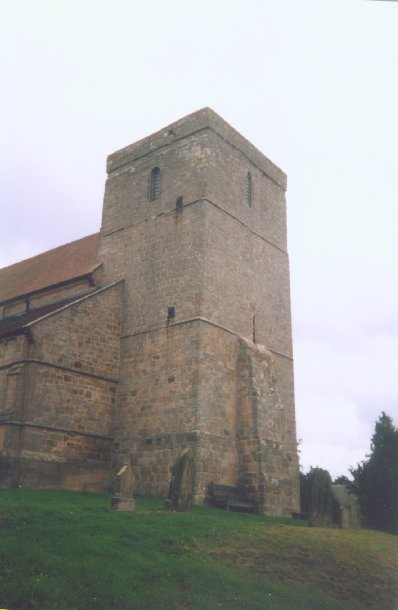BORDER CHURCHES
STAMFORDHAM - the church of ST MARY
The first recorded reference to a church at Stamfordham dates back to 1220. The church was rebuilt in 1848 to a design by Benjamin Ferrey. Much of the original
stonework was used in this restoration. The church is dedicated to St. Mary. Like many other churches in Northumberland, the church at Stamfordham has had a turbulent history. Proximity to Scotland made the church vulnerable to attack. In 1374 livestock belonging to the vicar of Stamfordham was stolen and his servants were attacked. At the outbreak of the Civil War, the vicar, Thomas Stevenson, was imprisoned and had his possessions seized several times.
There is a strong history of Presbyterianism at Stamfordham. In the 17th century Presbyterians met in a cottage at neighbouring Dalton. In 1742 a Presbyterian meeting house was built at the east end of village. In 1860 the congregation moved to new premises in the middle of the main street. This was originally a private house and was converted for use as a meeting house. The village does not have a Roman Catholic church but is served by the chapel at Cheeseburn Grange, a large private house in the township of the same name, that forms part of the parish
The church was built about 1220, probably on the site of an even older one. Many carved stones of an earlier date can be found built into the walls.At the west to an end of the North aisle is a large stone monument bearing the inscription:
"To the memory of John Swinburne, of Black Ended, and Marie, his wife, and son of Thomas Swinburne, of It, and the sole door to her of Thomas Collingwood, of S. Linton; they left for daughters."
This may be of interest to ancestry researchers.
Also within the church of references to the Dixon family.
Near the vestry is a mutilated legless figure of the knight in armour which is believed to be the effigy of Sir John de Felton, who was Lord of the manor of nearby Matfen. He was Sheriff of Northumberland during the reign of Richard II.
According to Froissart, the historian, Felton fought, and apparently died, at the Battle of Otterburn in August, 1388
AROUND AND ABOUT
